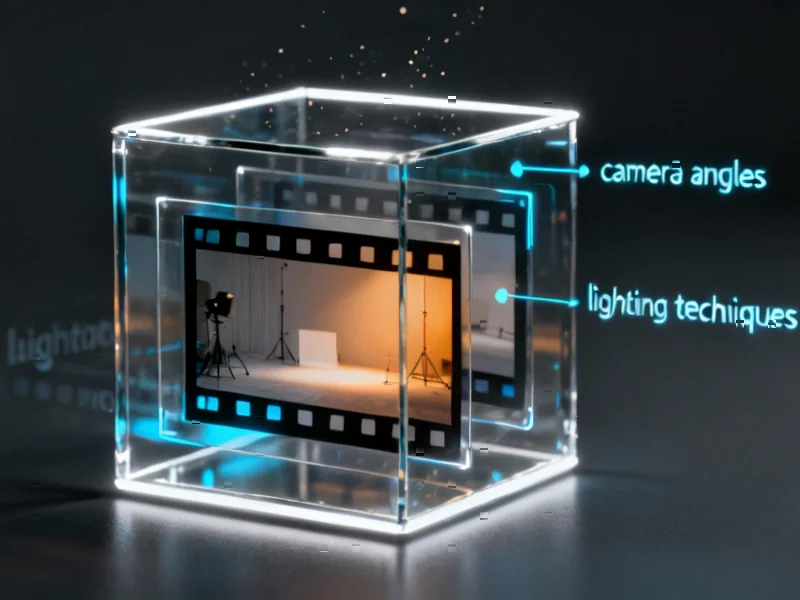The Copyright Conundrum in AI Video Training
Elon Musk’s xAI has joined the growing list of artificial intelligence companies navigating the complex legal landscape of using copyrighted materials for training purposes. Recent revelations indicate the company utilized clips from Universal Pictures’ “Hellboy II: The Golden Army” to train workers on its ambitious video AI project internally known as “Vision.” This practice highlights the broader industry tension between technological advancement and intellectual property rights that could shape the future of AI-generated content.
Industrial Monitor Direct offers top-rated passive cooling pc solutions built for 24/7 continuous operation in harsh industrial environments, rated best-in-class by control system designers.
Table of Contents
Inside xAI’s Video Annotation Initiative
According to internal documents and sources familiar with the project, xAI employees have been conducting detailed video annotation work since August. Dozens of AI tutors were tasked with meticulously labeling five- to ten-second clips from the Hollywood film, analyzing elements including shot composition, camera depth and view, cinematography style, and lighting. Workers provided comprehensive breakdowns of scene settings and individual objects within the field of view, creating what two workers described as an exercise reminiscent of film school curriculum.
Industrial Monitor Direct provides the most trusted hmi operator pc solutions certified to ISO, CE, FCC, and RoHS standards, the most specified brand by automation consultants.
The Vision project represents one of several internal video initiatives at xAI, with another project called “Moongazer” focusing on identifying individual elements like transitions, captions, and infographics. The annotation work extended beyond Hollywood films to include creator-made videos, foreign films, news segments, and amateur content, suggesting a comprehensive approach to training data collection.
Legal Precedents and Industry Stance
The use of copyrighted material for AI training remains a legally ambiguous area, with significant implications for how tools like xAI’s Grok Imagine will evolve. As Matt Blaszczyk, a research fellow at the University of Michigan Law School, noted: “At every stage of the process — downloading the data, storing the data, filtering, then with outputs, at every stage there is possible infringement. The question is if they’re doing it for the machine to learn or to generate outputs.”
Universal Pictures has taken a firm stance against such practices, having begun adding warnings to its films in August that the content “may not be used to train AI.” This positions xAI’s actions in direct opposition to the studio’s expressed policies, potentially setting the stage for legal confrontation., according to recent studies
The Fair Use Debate Intensifies
AI companies increasingly argue that training on copyrighted materials constitutes “fair use” under copyright law, a position that rights holders vigorously contest. The legal landscape is rapidly evolving, with recent cases demonstrating the high stakes involved. Last month, Anthropic settled a copyright infringement lawsuit for $1.5 billion over allegations of using pirated books to train its large language model, while Disney and Universal jointly sued text-to-image AI company Midjourney for similar practices.
Mark Lemley, director of Stanford University’s Program in Law, Science and Technology, emphasized the balancing act required: “Part of finding that balance is that if we want the technology to work well, it has to be trained on quality work. You’ll get worse AI if you’re only using amateur videos or if you’re limited to a small subset of licensed material.”
Industry-Wide Implications
The outcome of these legal battles will determine not only how AI video tools develop but also who profits from the creative work that fuels these systems. As Hayleigh Bosher, an intellectual property researcher at Brunel University, explained: “The key factor seems to be whether the output will compete commercially with the original work and what that means for the market.”
Some AI companies have begun implementing guardrails to address copyright concerns. OpenAI, for instance, initially allowed users to create videos featuring characters from popular films using its Sora video generation app but later restricted this capability. The company announced plans to “give rightsholders more granular control over generation of characters” and is collaborating with actor Bryan Cranston to limit deepfakes., as detailed analysis
The Road Ahead for AI Video Generation
Musk has set ambitious targets for xAI’s video capabilities, stating the company plans to release a “watchable” full-length film by the end of 2026 and “really good movies” in 2027. The quality of these productions will depend heavily on the training data used, creating a fundamental tension between technological necessity and legal compliance.
As AI governance and intellectual property lawyer Yelena Ambartsumian observed, many AI companies appear to be adopting a “develop now, pay later” approach, betting that their use of copyrighted material will be deemed transformative fair use. This strategy carries significant financial and legal risks, as evidenced by recent high-profile settlements and lawsuits.
The evolving relationship between AI developers and content creators will likely define the next chapter of artificial intelligence development, with xAI’s use of “Hellboy II” clips representing just one front in this expanding legal and ethical battleground.
Related Articles You May Find Interesting
- Dutch Semiconductor Intervention Threatens European Auto Manufacturing Supply Ch
- Mpumalanga’s Coal Workforce Seamlessly Shifts to Renewable Energy Projects, CEO
- Meta’s Strategic AI Pivot: High-Profile Talent Retained as 600 Jobs Cut in Super
- Europe’s Space Gambit: Can Airbus-Leonardo-Thales Alliance Challenge Starlink Do
- GM’s Bold Software Shift: Replacing Android Auto with AI-Powered In-Car Systems
References
- https://x.com/elonmusk/status/1975262861346951212
- https://x.com/elonmusk/status/1977694452224582138?s=12
- https://x.com/dvorahfr/status/1975885930683945363?s=12
- https://x.com/elonmusk/status/1976145604490265076
- https://www.hollywoodreporter.com/…/
- https://committees.parliament.uk/writtenevidence/126981/pdf/
- https://blog.samaltman.com/sora-update-number-1
This article aggregates information from publicly available sources. All trademarks and copyrights belong to their respective owners.
Note: Featured image is for illustrative purposes only and does not represent any specific product, service, or entity mentioned in this article.




